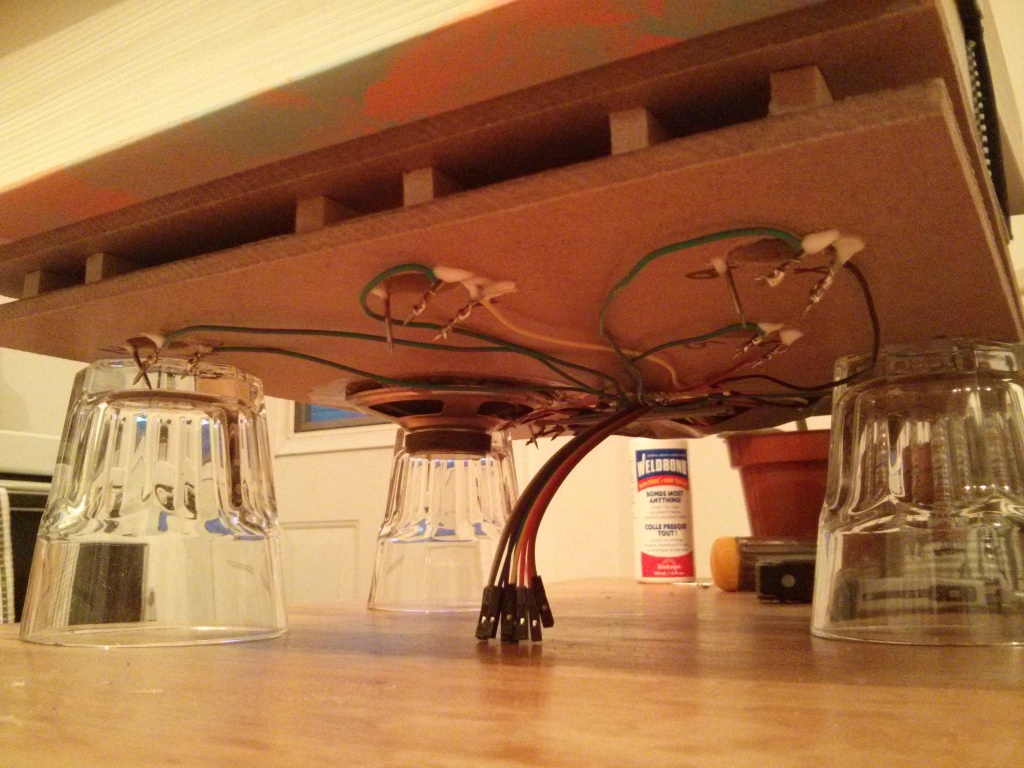
Old Montreal’s Acoustic Labyrinth hacks a marble maze game board, creating the ability for listeners to hear the same moment in time from six different perspectives. The sound I chose to map is the peal of the Basilica Notre Dame’s bells across Place D’Armes Square in Old Montreal. Centered around the notion of Exploration, this interface draws the listener’s ear to the ways in which sound is shaped and coloured by the built environment.
Inverting the usual rules of the “labyrinth” maze game, where the goal is to trace a route around a series of obstacles without falling into a hole, here the listener needs to drive the marble INTO the hole. Once it falls through, the marble triggers the sound recorded from that particular location. In this way, it is possible to quickly go back and forth between different perspectives of the same sound.
Built by hacking the playing surface of a Brio Labyrinth game, this interface uses an Arduino prototyping board and the Adafruit WaveShield audio playback system to trigger six different audio files. Each file will play out to completion unless another switch is triggered, in which case, it will interrupt playback and cue up the new file. This piece performs a very literal form of space/time compression. I have shrunk an area of just under a kilometer down to about 10 inches square. Here, listeners are able to ‘roll’ across several hundred meters in just a few seconds.
Using the interface is very easy. Simply drop the marble onto the board and then use the two knobs to control pitch and yaw of the mapping surface. The more you roll, the easier it is to compare and contrast recordings, allowing you to learn about how location colours sound. And, after repeated audition, other nuances come forward (chirping birds, the caleche across cobbled streets, and a beer can rolling in the wind).
Old Montreal’s Acoustic Labyrinth employs a phenomenological approach (both in recording and listening) which is about being open to the experience of ‘here,’ and how process, practice, and memory interact to create a sense of place.
Additionally, this interface can be used to draw out meaning from layers of Montreal’s history and culture, particularly the role of the Roman Catholic church in the founding and organizational structure of our community, and the centrality of Place d’Armes square in the development of the city.



